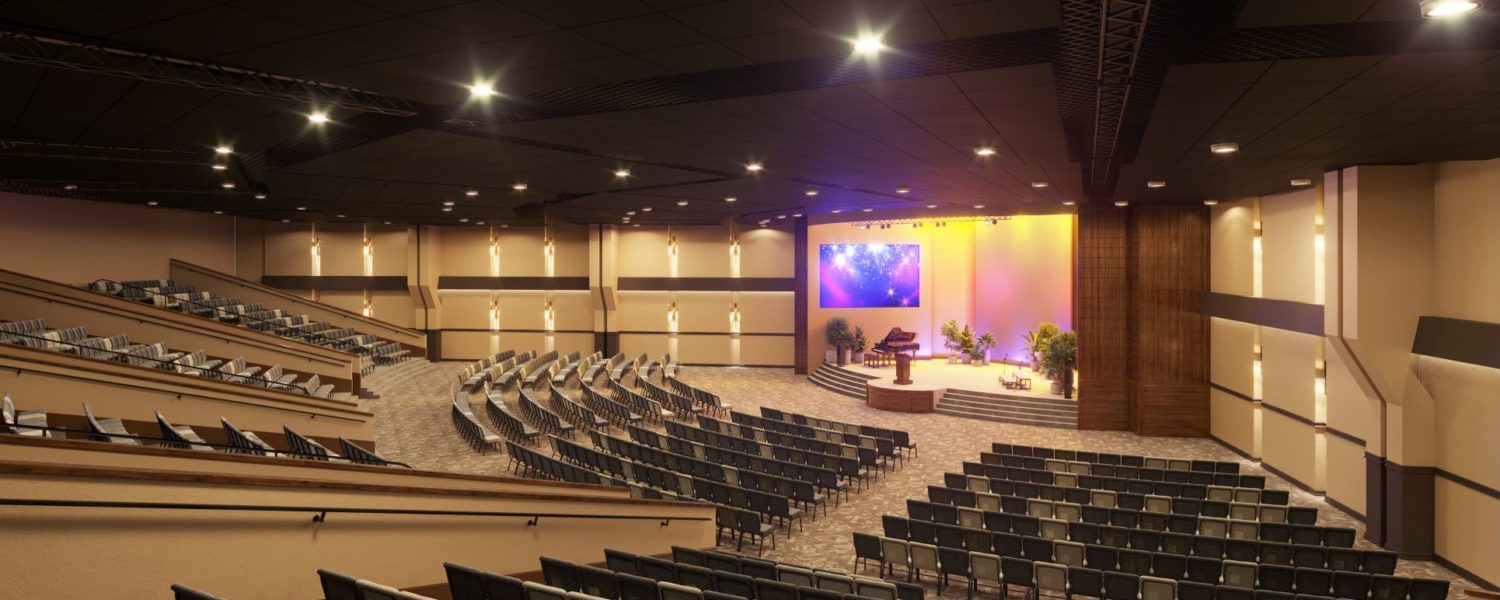By Ryan Borgstrom
Have you ever visited a church before and wondered how they managed to get their chairs so straight and even? This is the power of interlocking chairs. More churches have made the change, replacing older wooden pews with interlocking church chairs.
As you consider the future look and function of your sanctuary, there are a few things to keep in mind while you look at different options. Let’s take a look at some of the most common questions we hear.
We host a number of events within our space. How can chairs help our venue support this?
So much happens in a church beyond Sunday morning. With Bible studies, potluck dinners, raffle sales, weddings and funerals, the church can be a busy place throughout the week. The need for quick and deployable seating is obvious, but each of these events are unique and require a different “look.” This is where stacking chairs shine.
The chairs can be configured in the tradition interlocking row configuration, or just as easily, they can be placed around tables in a banquet form. To ease the transition from room to room, they can often be stacked 6 to 8 high and moved with hand carts. This allows for a room to be set up to host dozens of individuals in a matter of minutes.
Covers can be purchased to cover each chair to heighten the elegance of an event, and many fabrics are stain-resistant or available with stain barrier protection to aid in cleaning efforts.
I’ve heard there are different types of foam available. What difference does the foam make?
Often, when looking at chairs, it’s easy to forget that what’s inside the chair can be just as important as the exterior look. Foam plays the biggest part in the comfort and longevity of a chair. Most upholstered seating will contain one of two types of foam.
First is what the industry calls slab foam, which is manufactured in bulk and in much the same way as a loaf of bread. The raw components are mixed into a large batch container and placed into an oven. The foam is then baked. Once it has cooled, the foam is then cut into thickness and shape for final use. Some chairs are designed with dual density foam; this is when two different ratings of foam firmness are used to achieve a balanced and supportive sit. It’s always best to ask if the seat thickness measurement of the chair you’re looking at is for the entire seat construction, or if it is truly the foam thickness.
The second foam option is known as cold-cured molded foam, which is sometimes referred to as CCF foam. With cold-cured foam, you are getting the same cushioning that is found in automotive and high-end theater seating. Each cushion is individually molded, creating the least amount of waste, and providing a foam that will last for decades, while retaining its original shape and comfort. Cold-cured foam will often start off with a firmer feel, but will soften to a similar level as slab foam within a few months, and it will keep this same density for years to come. This foam is also liquid-resistant by nature; since it is a closed cell manufacturing technique, the foam will not absorb liquid that is spilt onto it.
Our congregation is aging. Are there any benefits to chairs for an older population?
Seniors can often be our most active participants and loyal visitors. A comfortable and accessible seating option can be a welcome way to show your gratefulness to them. Looking at suppliers with options for armed and wider seat chairs can often provide a level of service that many don’t consider.
The benefits to arms on chairs for individuals with mobility challenges can be immense. It alleviates anxiety of feeling as if you may find yourself unable to easily rise out of your seat without the aid of another member. Armed chairs can also provide separation for distancing or visual benefit. Some suppliers even offer the option for single armchairs to provide a “pew-end” appearance.
I’ve been asked to gather information on chairs, but I’m unsure what questions to ask. What information do I need upfront?
It can be rather overwhelming to look at something you don’t feel knowledgeable about. A chair is just a chair…they’re all the same, aren’t they? No, they really aren’t. Some of the questions that can help you to ask early on in your search are:
- Do the chairs come fully assembled?
- How long is the warranty on the chairs?
- How many years has the manufacturer been in business?
- What benefits does their chair offer over others?
Many times, you’ll soon find the reason that a “discount” chair is lower cost. Nothing is worse than having chairs arrive to your location still needing to be assembled.
Our floor has a slope. Are chairs even an option for us?
Depending on the supplier, they absolutely can be. Some manufacturers will offer the option to shorten legs. This allows you to shorten the rear legs to allow the chairs to sit evenly on a sloped floor.
Anchors are available as well by some providers, meaning you can affix the seating onto the floor to stop any sliding if the slope is extreme. Risers can also be an application that anchoring the chairs to the floor may be beneficial.
We’ve received a few sample chairs. How do we compare them to one another?
One of the best ways you can test a chair is to sit in it, but not for just a few seconds, though. Take that chair to your desk and sit for an hour, two hours, a day even. Many chairs will feel comfortable for the first few minutes you sit in them; however, after 30 minutes, you start to feel if the chair is truly supporting you. If you’re not comfortable sitting in it for a length of time, chances are, neither will your guest.
Switching to chairs from pews, or even replacing existing chairs, can be a bit overwhelming, but doing the research and finding a supplier that wants to be a partner rather than a salesperson can make all the difference.
Ryan Borgstrom is director of sales for ComforTek Seating, which manufactures high-quality seating solutions for a variety of industries,www.comfortek.com.












